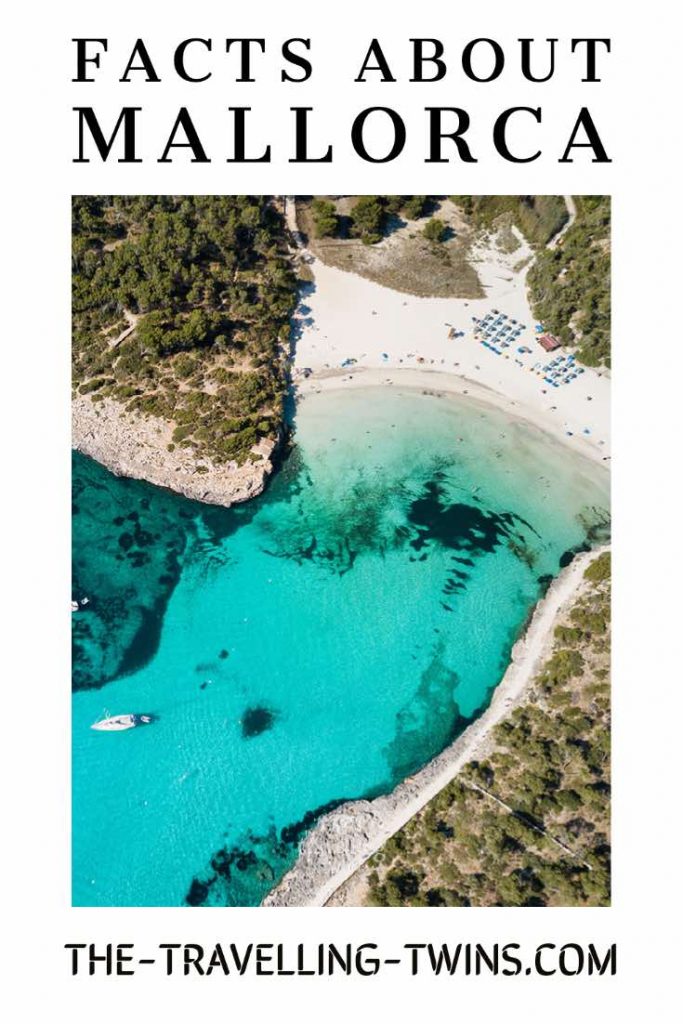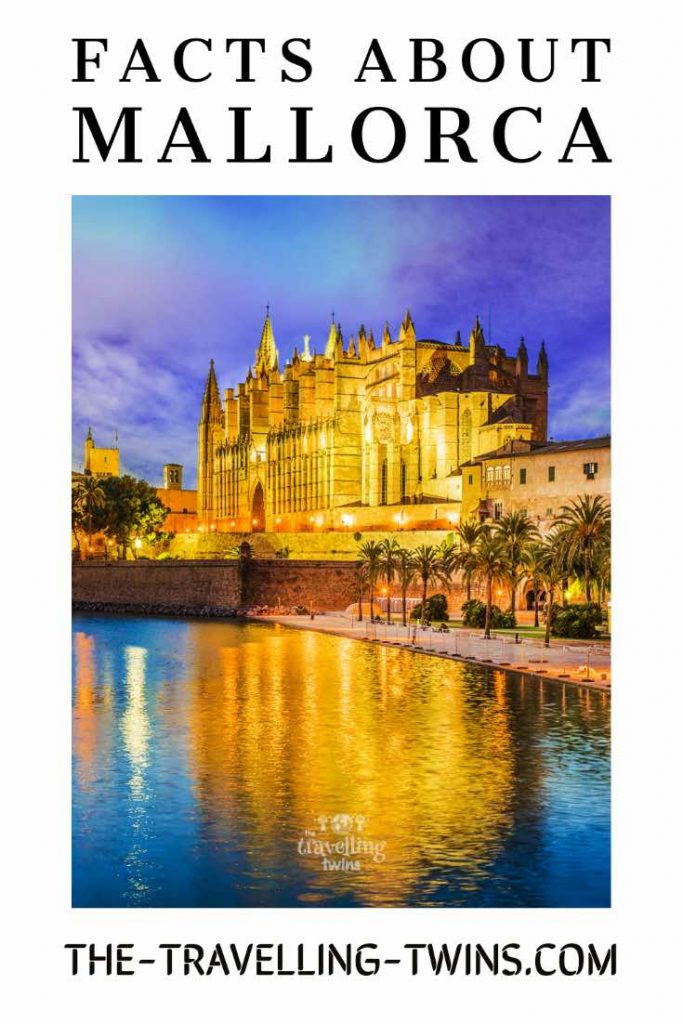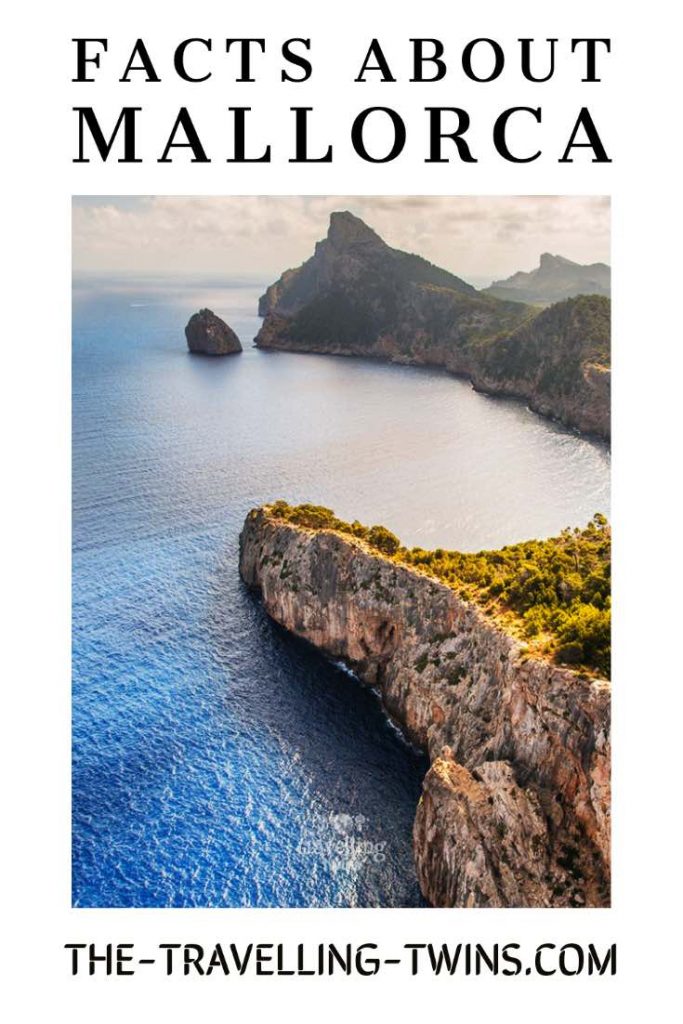Mallorca is, rightly, popular for its beautiful sandy beaches and incredible climate — with a year-round averaging temperature of about 21°C and more than 300 days of sunshine every year. Mallorca’s glorious Mediterranean climate is definitely a major reason why tourists flock here – it is one of the warmest places in Europe.
We visited Mallorca with kids and had great fun exploring the island and learning interesting facts about Mallorca – and yes: there is much more to Mallorca than its beautiful beaches and sunshine.
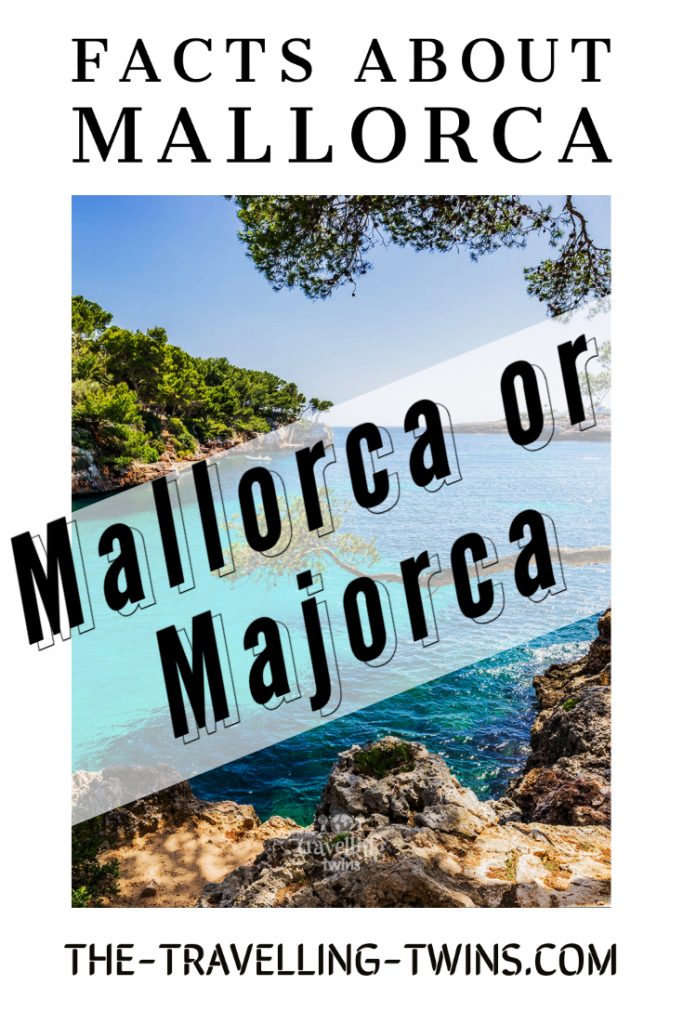
But let’s start with the question lots of people asks.
Is it Mallorca or Majorca?
Officially, the name of the island is Mallorca, and that’s the correct spelling, but the English name for the island is “Majorca,” usually pronounced with soft “j”, and it is the popular spelling, especially among UK tourists.
Origin of Mallorca name
Mallorca name comes from the old Latin phrase insula maior – meaning “Larger Island” when nearby Menorca is called “the smaller island.”
Where is Mallorca?
Mallorca is one of the Balearic Islands, an archipelago located in the western Mediterranean Sea, to the east of mainland Spain and south of France. Mallorca is the most populous and the largest Island of the Balearic Islands. The other Balearic Islands Menorca, Ibiza, and Formentera, all of which are popular tourist destinations, and a number of smaller islands.
The Balearic Islands form an “Autonomous Community” as part of Spain. The term Autonomous Community is similar to a Region or State in other nations.
The history of Mallorca
The history of Mallorca is a long and varied one. The island has been inhabited since 7000 BC and has been ruled by a number of different countries.
Originally the island was settled by the Phoenicians, who were followed by the Romans. Later the island was passed into the hands of the Moors before being taken over by the Christians in the 13th century – the most famous invasion was by King Jaime of Aragon in 1229.
The island has since been ruled by a number of different countries, including Spain, France, and England.
Geography of Mallorca
The geography of Mallorca is diverse, with two mountainous regions in the north (the Serra de Tramuntana and the Serres de Llevant) and beaches in the south. The highest peak in Mallorca is Puig Major, which is 1,436 meters above sea level. The Serra de Tramuntana mountain range runs along the north-western coast of Mallorca and is a UNESCO World Heritage Site as an area of Great Physical and Cultural Significance.
The beaches of Mallorca are well-known for their clear water and sandy beaches. The most popular beach on Mallorca is Sa Coma. The sea bed is mainly sand here, allowing easy access to the water and beautiful sandbars can also be found in some areas.
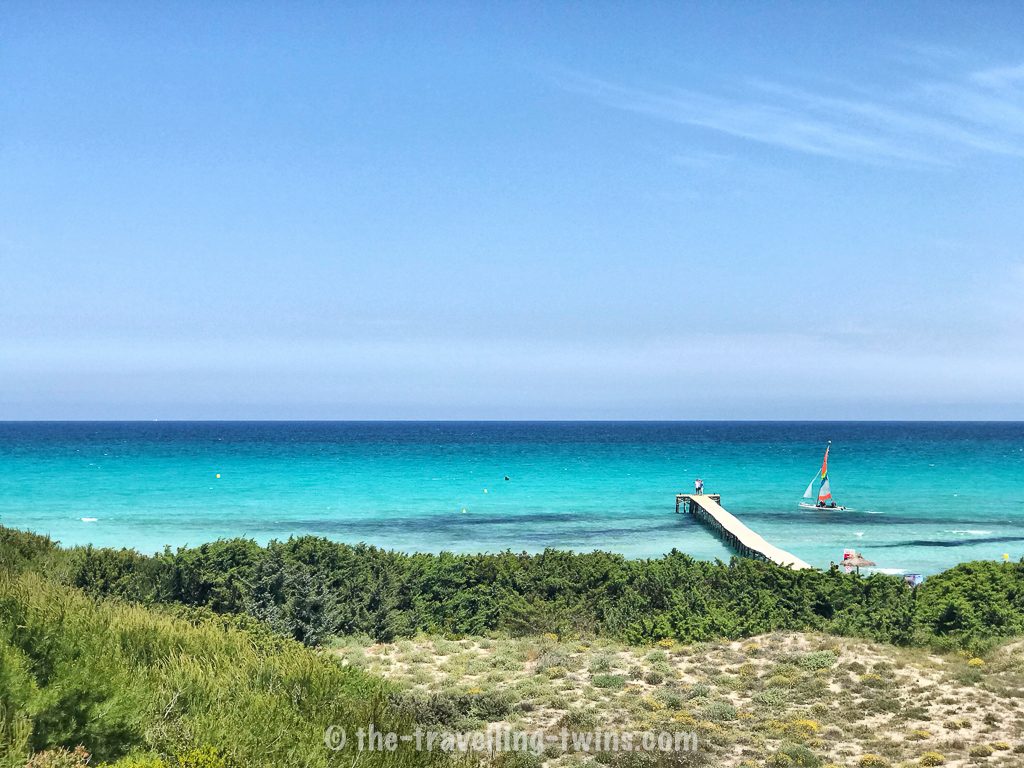
Mallorca also has an amazing range of cave systems, including the Caves of Drach or Hams Cave Systems with giant stalactites, stalagmites, underground waterfalls and lakes.
The climate of Mallorca
The climate in Mallorca is dry, with hot summers and mild winters.
Mallorca has a mild Mediterranean climate with an average temperature of average temperature ranges between 20°C – 29°C during the summer months.
Winter in Mallorca is generally mild, with the average daily high temperature in December being just 13°C.
The high season for Mallorca’s tourist industry is from May to October when the weather is at its warmest.
What to do in Mallorca?
Mallorca has plenty of opportunities for tourists. These include hiking trails, horse riding, cycling, scuba diving, snorkeling, and sailing. If you are looking for water sports, especially then Mallorca is the place to be – jet skiing, windsurfing, or just relaxing on a catamaran or glass-bottomed boat.
There are several historic sites of interest throughout Mallorca, including the Phoenician marble tomb at Torre d’en Gaumés, the theater at Tauro and the Neolithic site of Sa Canova de Aucardo.
Mallorca also has some interesting cultural events throughout the year – for example, it hosts an International Jazz festival every May.
Mallorcan cuisine
The cuisine in Mallorca is a blend of Spanish and Mediterranean cuisine with chefs on Mallorca using fresh fish, seafood and locally grown fruit and vegetables.
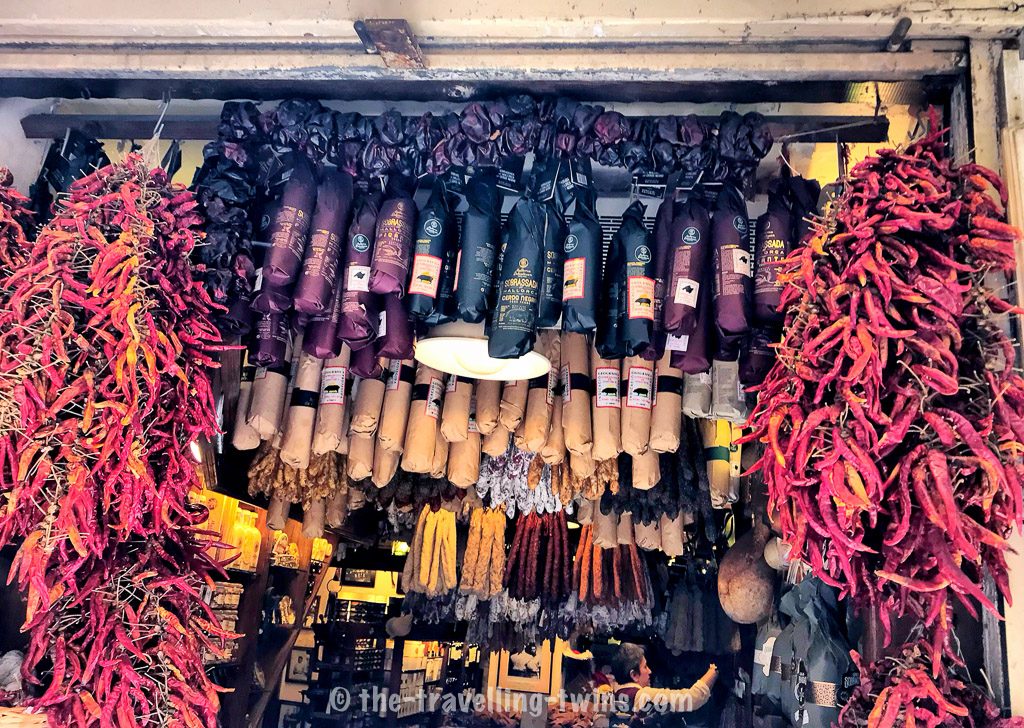
Mallorcans are known for their large appetite, perhaps owing to the sunny climate that allows them to be outside and active the whole day. Typical Mallorcan cuisine contains many meat and fish dishes, as well as various vegetable stews. The best-known dish from Mallorca is the simple Pa Amb Oli – Mallorcan bread with oil.
Culture of Mallorca
The Mallorcan people are proud of their reputation for hospitality, friendliness and hard work. There is a unique local culture. The official language of Mallorca is Catalan Catalan is a romance language, and so it has many common words and a similar syntax to Spanish; however, it is different enough to be unintelligible to most Spanish speakers. However, Spanish and English are also commonly spoken on the island – so you won’t have any language barriers when visiting Mallorca.
The main religion in Mallorca is Catholicism, with 91% of citizens being Roman Catholic.
The culture of Mallorca reflects its diverse history, with influences from France, England and Portugal reflected in place names and architectural heritage.
Despite its popularity as a tourist destination, Mallorca has maintained its own traditions and culture. The area’s traditional architecture, including the white-washed houses with terracotta tiles, is still evident throughout the island.
Mallorca attracts lots of artists, musicians, painters. Some of the most famous names include.
- Robert Graves, the British author of the novel I Claudius
- Frederic Chopin – the Polish Composer and pianist who composed some of his greatest work while living in Valldemosa with George Sand. Frederic Chopin is one of the most famous Poles.
The Island of Mallorca is also the birthplace of famous tennis player Rafael Nadal.
Interesting facts about Mallorca
The capital city of Mallorca is Palma de Mallorca. Almost half of the Mallorca population lives in the capital.
The main landmark of Palma is the Catedral Mallorca – La Seu – a huge cathedral built in the Gothic style. The construction of the Cathedral began in 1229 when the Spanish invaded the previously Morrish (Islamic) island. The Cathedral was erected on the site of a mosque and was finally finished in 1601.
The best-known place on Mallorca is Pollença, a tiny fishing village with an amazing monastery built into the cliffside. It’s one of Spain’s top destinations for travelers wishing to immerse themselves completely in local culture. Of course, there are other places to see too. The island has some beautiful towns. As well as Pollenca, visit – Palma Nova, Port d’Andratx, and Arta.
There are more than 270 beaches located around the coast of Mallorca
There are around 200 different varieties of figs grown on Mallorca.
Economy and tourism in Mallorca
The island’s economy is driven by its tourism industry (75%), followed by trade fairs and cultural attractions. Shopping is also a huge part of Mallorca’s economy. Many holiday makers come to shop for luxury brands.
Mallorca became popular with tourists in the 1950s when the first hotels were built, and the island started offering package holidays.
Unfortunately, mass tourism has also led to environmental damage, including disappearing beaches (possibly due to the deliberate removal of Neptune grass – a seaweed that grows offshore on the sea bed but is considered to be offputting to swimmers). The removal of dune systems because of coastline building construction and water shortages.
Mallorca attracts not only beach goers but also avid cyclists, including many professional cyclists, who find the island the perfect training place. According to Mallorcan Tourist Board, over 35000 cyclists visit the island annually.
Many people believe that the island is full of luxury five-star resorts, but it offers a range of accommodations from luxurious hotels to budget-friendly hostels and apartments. Mallorca has something for everyone!
The region is also popular for its nightlife, historical sites and natural beauty, including the Tramuntana mountain range, with magnificent views including a backdrop of blue skies and of course, the Mediterranean Sea.
Mallorca Facts – Summary
The facts about Mallorca you just read are only a small portion of the interesting facts about this beautiful island!
So what are you waiting for? Travel on over to your dream destination and conduct your own research! There are so many things to learn; don’t waste another moment!
What is Mallorca famous for? – Pin it for later
Privacy Policy Disclaimer
This website uses affiliate links for income and support.
If you like our website, please consider using these links. You will be directed to the vendor, and we will get a small commission on your purchase price at no increased cost to you.
We have researched facts stated here as far as practicable but please check anything critical before committing your time and money. We do not claim any special knowledge or expertise, and we are not consultants for our readers.
villages Pla de Mallorca
